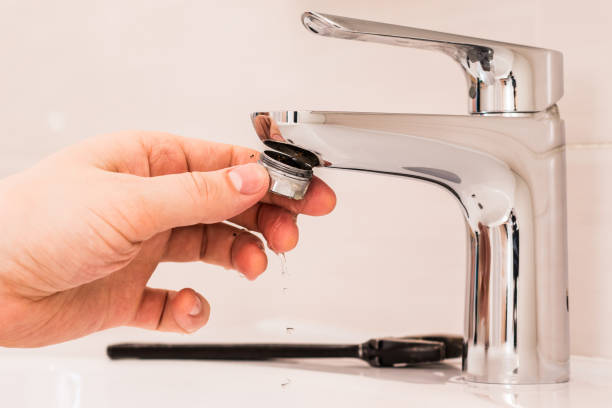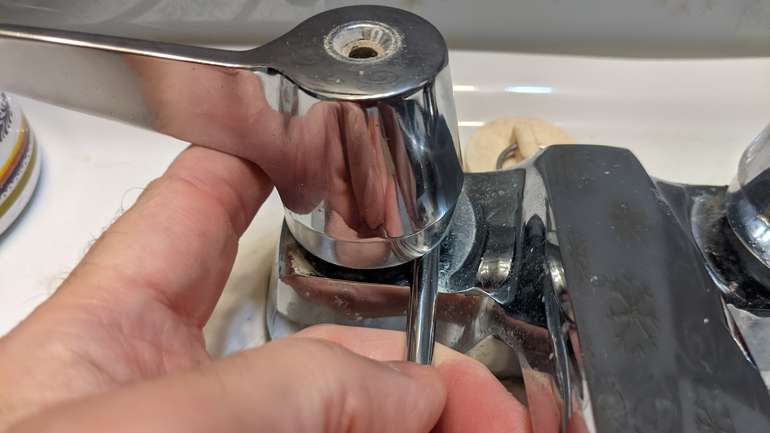What It's Important to Deal with a Faulty Faucet
What It's Important to Deal with a Faulty Faucet
Blog Article
The author is making a few great annotation on the subject of Why It's Important to Fix Leaky Faucets in general in the article further down.

Trickling faucets could seem like a minor inconvenience, but their influence goes beyond just the aggravation of the audio. From wasting water to sustaining unneeded economic prices and health and wellness threats, overlooking a dripping faucet can lead to various effects. In this short article, we'll explore why it's crucial to address this usual household issue promptly and successfully.
Waste of Water
Ecological Effect
Leaking faucets add significantly to water waste. According to the Environmental Protection Agency (EPA), a single faucet dripping at one drip per second can squander greater than 3,000 gallons of water annually. This not just pressures water resources however additionally impacts environments and wildlife dependent on them.
Financial Costs
Boosted Water Bills
Past the ecological effect, trickling faucets can inflate water costs significantly. The accumulated wastage over time equates into higher utility expenses, which could have been prevented with timely repair work.
Potential Residential Property Damage
Furthermore, extended leaking can cause harm to components and surface areas bordering the faucet. Water build-up can cause discoloration, deterioration, and also architectural issues if left ignored, causing additional repair work expenses.
Wellness Problems
Mold and Mold Growth
The consistent existence of wetness from a leaking tap creates an optimal atmosphere for mold and mold growth. These fungis not only jeopardize indoor air top quality however likewise present health threats, especially for people with respiratory system conditions or allergies.
Waterborne Diseases
Stagnant water in trickling faucets can become a breeding ground for microorganisms and various other virus, boosting the risk of waterborne illness. Contaminants such as Legionella germs grow in stationary water, possibly leading to severe illnesses when ingested or inhaled.
Do it yourself vs. Professional Repair work
Benefits and drawbacks of DIY Repair
While some may attempt to repair a leaking tap themselves, do it yourself repair services feature their very own collection of difficulties. Without appropriate understanding and devices, do it yourself attempts can worsen the concern or lead to incomplete repair work, extending the issue.
Advantages of Working With a Specialist Plumber
Working with a specialist plumber guarantees that the underlying reason for the leaking tap is dealt with successfully. Plumbing professionals possess the experience and equipment to identify and fix faucet concerns successfully, conserving time and minimizing the danger of additional damage.
Step-by-Step Guide to Repairing a Dripping Faucet
Tools Called for
Before trying to deal with a leaking tap, gather the necessary devices, consisting of an adjustable wrench, screwdrivers, substitute components (such as washers or cartridges), and plumber's tape.
Common Tap Issues and Their Solutions
Determine the kind of faucet and the certain problem creating the drip. Usual troubles consist of damaged washers, rusty valve seats, or defective O-rings. Describe manufacturer directions or on-line tutorials for step-by-step advice on repair work.
Safety nets
Regular Maintenance Tips
To stop dripping faucets, do regular upkeep such as cleaning aerators, examining for leakages, and replacing worn-out parts without delay. Additionally, consider setting up water-saving gadgets or upgrading to a lot more reliable components.
Relevance of Prompt Repair Works
Attending to trickling taps as quickly as they're discovered avoids further water wastefulness and possible damage, inevitably saving both water and money in the future.
Effect On Building Value
Assumption of Well-Maintained Residential Property
Keeping a building in good condition, consisting of resolving upkeep issues like leaking faucets, boosts its perceived worth and value among potential customers or tenants.
Impact on Resale Value
Qualities with properly maintained plumbing components, including faucets, command greater resale values in the property market. Attending to leaking taps can contribute to a favorable perception throughout property evaluations and arrangements.
Environmental Duty
Individual Contribution to Preservation
Taking responsibility for taking care of dripping taps lines up with broader initiatives toward water preservation and ecological sustainability. Every individual's activities jointly make a substantial impact on preserving priceless sources.
Sustainable Living Practices
By focusing on timely repairs and adopting water-saving behaviors, people add to sustainable living methods that profit both existing and future generations.
Verdict
Dealing with a trickling tap goes beyond simple benefit; it's a crucial step toward conserving water, decreasing monetary expenses, and securing health and wellness and property. Whether through DIY repair work or professional help, acting to repair dripping taps is a little yet impactful method to promote responsible stewardship of resources and add to a much healthier, extra sustainable future.
How to Fix a Leaky Faucet: Step-by-Step Repair Guide
A leaky faucet may seem like a simple annoyance, but if it's not fixed promptly, that leak could cost hundreds to potentially thousands. From water damage to mold, mildew, and high water bills, even a tiny leak can be catastrophic if left unattended. Damage like this can even affect the overall value of your home, so it's important to take the right approach for leaky faucet repair. You may need the help of a plumber in some cases, but we've got a few tips you can try on how to fix a leaky faucet before calling the pros.
Four Faucet Types
When you're learning how to fix a leaky faucet, the first step is knowing what kind of faucet you're working with! There are four common types.
Cartridge Faucets
Cartridge faucets come in one- or two-handled varieties. In one-handled cartridge faucets, hot and cold water combines in a single cartridge. In the two-handled versions, hot and cold water are controlled separately and mixed in the faucet.
Ball Faucets
Ball faucets have a single lever you push up and down to adjust the pressure and rotate to change the temperature. A slotted metal ball controls the amount of water allowed into the spout.
Compression Washer Faucets
They're the oldest type of faucet, but they're still used in many homes — especially older ones. Compression faucets have two separate handles that, when turned, raise or lower the washer that seals a water valve. This valve stops water from flowing through the faucet when it is turned off.
Disc Faucets
Disc faucets rarely need to be repaired due to their maintenance-free design. The water flow is controlled by two discs — the upper one raises and lowers against a fixed lower disc, creating a watertight seal. If your disc faucet starts leaking, you may need to replace the seals or clean residue buildup from the inlets.
Fixing a Leaky Faucet
Step 1: Turn Off the Water
Whether you're learning how to fix a leaky bathtub faucet or how to fix a leaky kitchen faucet, always turn off the water supply to your working area when you're fixing a leak. The last thing you want is a flood added to your list of things to fix.
Look for the shutoff valves below your sink or around the tub and turn them clockwise to stop the water flow. If your faucet doesn't have shutoff valves, you may need to turn off the water for the whole house. Check to make sure it's off by turning the faucet on. If nothing comes out, you're ready to start the repair.
Step 2: Take Apart the Faucet
How you disassemble your faucet depends on the type of fixture you have. You can use a flathead screwdriver to remove the caps on top of the handle or handles for cartridge and compression faucets. Inside, you should see handle screws. Unscrew these with a screwdriver to remove the handle.
Disc- and ball-style faucets will typically have an inlet screw near the handle, and removing that will reveal the interior of the faucet.
Detach the Valve Stem
For cartridge- and compression-style faucets, you'll see the inner valve stem or cartridge once you remove the faucet handles. If you have a compression faucet, unscrew the brass valve stem. If you have a cartridge faucet, pull out the cartridge. If your cartridge has been in place for a while, it may require some tools or extra force to remove it due to mineral deposits.
Examine and Replace Parts
Once you've removed the parts, check them out to confirm what needs to be replaced. You may see corroded rubber washers, O-rings, stems, or cartridges. On a ball-style faucet, check the seats and springs for damage.
If you need to repair a leaky disc faucet, check the inlet and seals on the lower disc.
Once you determine what parts must be replaced, visit your local hardware store. Bring the damaged parts with you to ensure you can purchase the correct components to replace them.
Clean Valves and Faucet Cavity
If you've removed a stem or cartridge, you may notice mineral buildup in the faucet's threads. Use white vinegar to clean the valve seat by soaking it for a few minutes, then scrub it away with a soft toothbrush and rinse with warm water. You can also clean the interior of the faucet in the same way.
Reassemble the Faucet
Once your faucet is cleaned and the required parts have been replaced, it's time to reassemble it. Put the pieces back together and slowly turn the water supply back on. Doing this slowly is crucial because too much initial water pressure can damage the new hardware you've just installed.
https://homewarranty.firstam.com/blog/how-to-fix-leaky-faucet

I stumbled upon that review on Why Is It Important To Fix Your Leaking Tap/Faucet? when scouting around the internet. Be sure to take a moment to share this write-up if you appreciated it. Thanks a lot for taking the time to read it.
Report this page